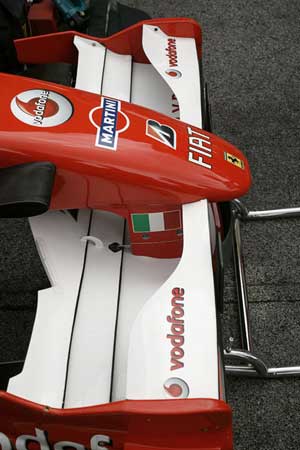MARCH 21, 2006
Wings and things

The negotiations in the paddock in Malaysia last weekend over the question of what is legal and what is not legal was an unusual thing for Formula 1. Rather than washing its dirty linen in public, as has been the fashion for many years, the F1 teams and the FIA managed to sort out the problem without having press conferences and dragging the sport through the mud. It seems, therefore, that lessons have been learned since Imola and Indianapolis last year. The final details of who is having to change what have also been nicely fudged so that no single team is seen as being the bad guy. Renault engineer Pat Symonds said after Bahrain that he did not believe that the Ferraris were running legal system but now there is talk that GPMA hardliners Mercedes-Benz and BMW have also been told to make changes. There was no talk of that in Kuala Lumpur on Sunday when eight of the 11 teams warned the FIA stewards that trouble was coming if action was not taken. Our spies tell us that there was a compelling case against one team with clever evidence being put forward to prove the case. It seems that engineers conducted acoustic analysis of recordings made of the various engines at the track. This gave them the revs being produced by each engine and from that calculations could then be made to establish a map of the speeds possible given the aerodynamics of each car. It seems that these maps were then compared and there was a clear increase in speed for one particular car when it reached a certain velocity. It is claimed that the only possible explanation of this was that something must have changed in the aerodynamic set-up to have allowed the car to move through the air more quickly when the engine could no longer accelerate to higher speeds. Measuring movement of wings on cars that are on the move is not apparently impossible. Getting the extra speed apparently is.